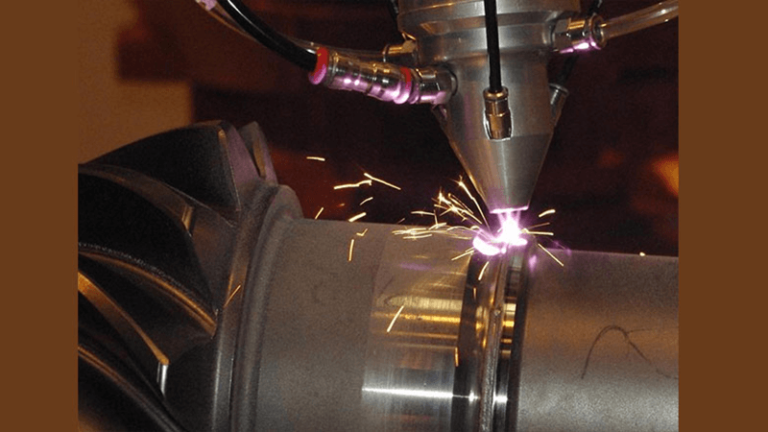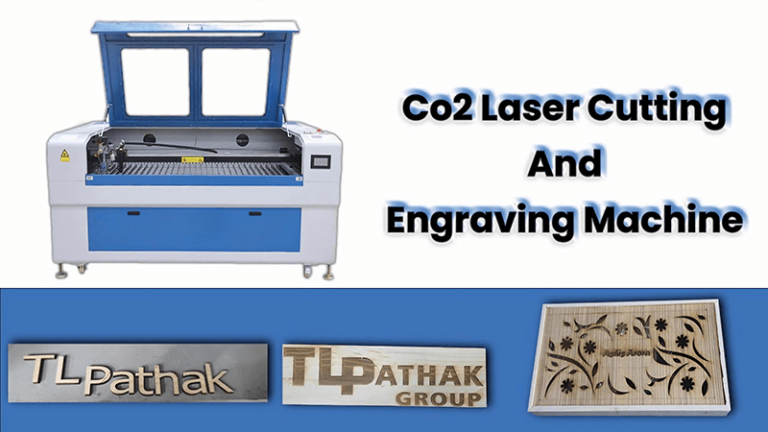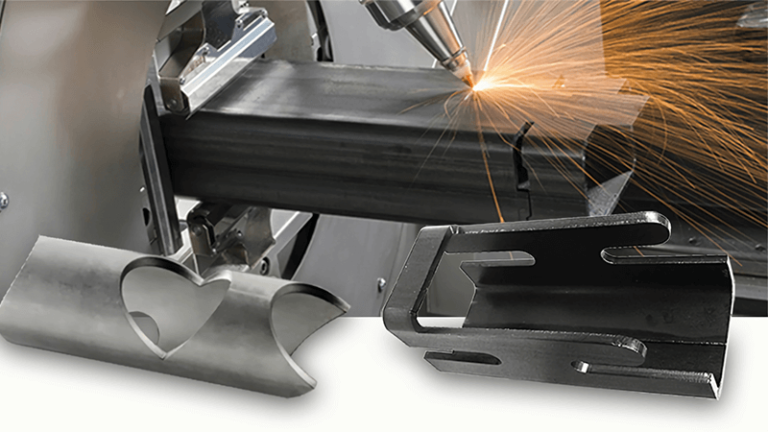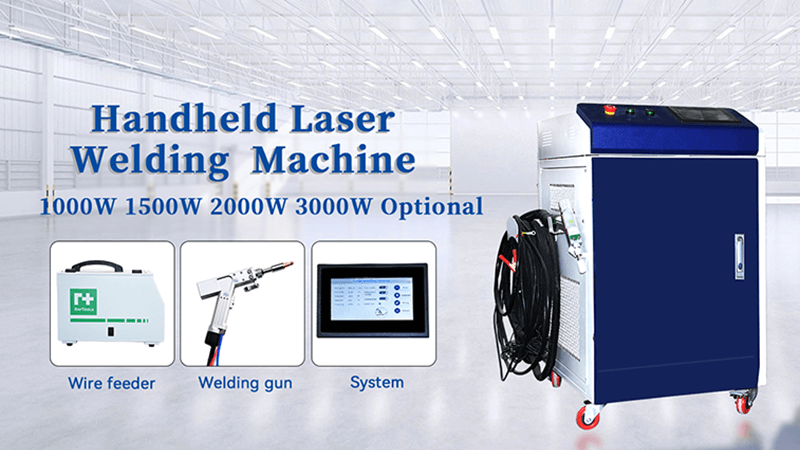
Choosing the right laser welding equipment is crucial for achieving high-quality welds while ensuring efficiency and cost-effectiveness. So, how do you choose the right laser welding machine without breaking the bank or compromising on performance? Let’s break it down and look at the factors that will guide your decision-making process.
Selecting the right laser welding equipment requires evaluating several key factors: application requirements, laser machine type, power output, speed, automation capabilities, user-friendliness, precision, and manufacturer support. Consider the material to be welded, the type of weld needed, and the level of automation your operation requires. For high-quality welds, ensure that the machine offers precision, reliability, and ease of use. Strong manufacturer support and service options are also crucial for minimizing downtime and maximizing productivity. By carefully assessing these factors, you can improve your manufacturing processes and meet industry standards for optimal results.
In this post, I’ll cover the essential aspects to help you choose the best laser welding equipment. Whether you're new to laser welding or considering an upgrade, understanding what to look for can save you time and money.
What to Look for When Choosing Laser Welding Equipment?
When choosing laser welding equipment, it’s important to consider several key factors: power, speed, material compatibility, and cost. These elements will determine the overall performance and efficiency of the machine.
-
Power: Different applications require different power levels. A higher power laser is essential for thicker materials, while a lower power laser can be used for precision work on thinner metals.
-
Speed: Speed is essential for maintaining high productivity. Faster welding machines reduce overall processing time, but it's crucial to balance speed with quality.
-
Material Compatibility: Not all lasers are compatible with every material. Be sure to choose a machine that can handle the materials you’ll be working with most.
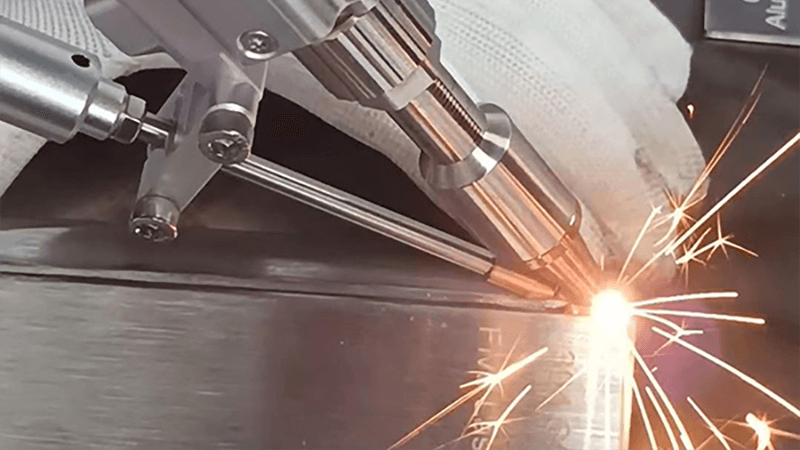
The following table summarizes the cutting parameters for 1.5kW, 2kW, and 3kW laser welding machines when cutting aluminum, stainless steel, and copper. These parameters include material type, thickness, cutting speed, spot diameter, and power settings. This information is crucial for optimizing laser cutting processes based on specific material requirements.
| Material | Thickness (mm) | Cutting Speed (mm/s) | Spot Diameter (mm) | Power (kW) |
|---|---|---|---|---|
| Aluminum | 0.5 - 1 | 50 - 120 | 0.2 - 0.3 | 1 - 1.3 |
| Aluminum | 1 - 2 | 30 - 80 | 0.25 - 0.4 | 1.2 - 1.5 |
| Stainless Steel | 0.5 - 1 | 40 - 100 | 0.2 - 0.3 | 1 - 1.3 |
| Stainless Steel | 1 - 2 | 30 - 70 | 0.25 - 0.4 | 1.2 - 1.5 |
| Copper | 0.5 - 1 | 30 - 90 | 0.2 - 0.3 | 1 - 1.3 |
| Copper | 1 - 2 | 20 - 60 | 0.25 - 0.4 | 1.2 - 1.5 |
| Aluminum | 2 - 3 | 20 - 50 | 0.3 - 0.5 | 1.4 - 2 |
| Aluminum | 3 - 4 | 15 - 40 | 0.35 - 0.55 | 1.6 - 2 |
| Stainless Steel | 2 - 3 | 25 - 60 | 0.3 - 0.5 | 1.4 - 2 |
| Stainless Steel | 3 - 4 | 20 - 50 | 0.35 - 0.55 | 1.6 - 2 |
| Copper | 2 - 3 | 18 - 45 | 0.3 - 0.5 | 1.4 - 2 |
| Copper | 3 - 4 | 14 - 35 | 0.35 - 0.55 | 1.6 - 2 |
| Aluminum | 4 - 6 | 10 - 30 | 0.4 - 0.6 | 2 - 3 |
| Aluminum | 6 - 8 | 8 - 20 | 0.45 - 0.7 | 2.2 - 3 |
| Stainless Steel | 4 - 6 | 12 - 35 | 0.4 - 0.6 | 2 - 3 |
| Stainless Steel | 6 - 8 | 10 - 30 | 0.45 - 0.7 | 2.2 - 3 |
| Copper | 4 - 6 | 8 - 25 | 0.4 - 0.6 | 2 - 3 |
| Copper | 6 - 8 | 6 - 20 | 0.45 - 0.7 | 2.2 - 3 |
These parameters can be adjusted based on specific cutting requirements such as surface roughness and material purity to achieve optimal results in laser cutting operations.
Handheld laser welding machines are ideal for on-site and small-scale applications.True
Handheld machines are portable, versatile, and designed for flexibility in various environments.
Robotic arm laser welding machines are primarily used for small-scale tasks in workshops.False
Robotic arm systems are suited for complex, high-volume manufacturing and not limited to small-scale tasks.
What Types of Laser Welding Machines Are Available?
Laser welding machines come in various types, each suited for different applications. The three main types are:
handheld, platform, and robotic arm systems. Each type is designed for specific applications and offers unique features tailored to different production needs.
Handheld Laser Welding Machines
Handheld laser welding machines are compact, portable devices designed for flexibility and ease of use. Ideal for fieldwork or small-scale applications, they allow operators to carry out high-quality welds in diverse environments.
- Key Features:
-
Portability: Lightweight and easy to transport, these machines are perfect for on-site welding in various industries like automotive repair and metal fabrication.
-
Versatility: Capable of performing spot, seam, pulse, and continuous welding on materials such as stainless steel, aluminum, and even harder-to-weld metals like titanium.
-
Ease of Use: Designed for quick learning, with most models requiring only about two hours of training. Many machines include presets for different materials and thicknesses.
-
Efficiency: Laser welding speeds are 2 to 5 times faster than traditional methods, leading to high-quality welds with minimal thermal distortion.
- Applications:
- Automotive repair
- Metal fabrication
- Maintenance work
Platform Laser Welding Machines
Platform laser welding machines are stationary, high-precision systems designed for larger-scale production environments. These machines are ideal for tasks requiring high throughput, such as in mass production and assembly lines.
- Key Features:
- Automation: Often integrated with automation systems for continuous, high-speed welding operations, perfect for repetitive production tasks.
-
Precision: Advanced positioning systems (XYZ axes) enable precise weld placement, ensuring tight tolerances and consistent results.
-
Material Versatility: Suitable for various materials and thicknesses, including those used in automotive, aerospace, and electronics industries.
-
Minimal Heat Affected Zone (HAZ): The concentrated heat of laser welding creates a smaller HAZ compared to traditional welding methods, preserving the material's mechanical properties.
- Applications:
- Automotive manufacturing
- Aerospace component production
- Electronics assembly
Robotic Arm Laser Welding Machines
Robotic arm laser welding machines combine the precision of laser welding with the flexibility of robotic arms. These systems are ideal for complex welding tasks that require multi-angle precision or irregularly shaped components.
- Key Features:
-
Flexibility: Equipped with six degrees of freedom, robotic arms can navigate complex geometries, making them suitable for varied production runs or parts with intricate designs.
-
High Efficiency: These machines operate continuously without fatigue, maximizing throughput and reducing labor costs in high-volume manufacturing settings.
-
Advanced Control Systems: Intelligent control systems dynamically adjust welding parameters to optimize weld quality based on the characteristics of the workpiece.
-
Safety: By automating the welding process, robotic arm systems reduce operator exposure to hazardous conditions typical of traditional welding techniques.
- Applications:
- Automotive manufacturing (e.g., battery packs)
- Aerospace components
- Precision welding for complex or irregularly shaped parts
The type of laser you choose depends on your specific welding needs, material types, and desired speed.
A 3kW laser welding machine is suitable for welding thin and delicate materials.False
3kW machines are better suited for thick materials requiring higher power, not for delicate materials.
Platform laser welding machines are optimized for repetitive, high-speed production tasks.True
Platform machines are stationary systems often used in automated environments like assembly lines.
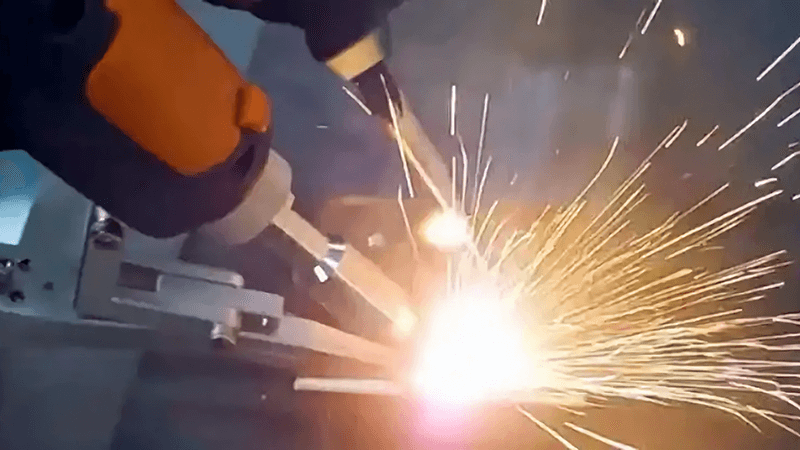
How Do You Determine the Right Power for Your Welding Job?
The power rating of a laser welding machine determines its ability to handle different materials and thicknesses. A higher power rating (e.g., 3kW or above) is generally needed for thick materials, while lower power lasers (around 500W to 1kW) can handle thinner metals or precision welding tasks.
- Impact of Power: The more powerful the laser, the deeper it can penetrate the material, resulting in faster welds with more heat input.
- Example: A 3kW fiber laser is ideal for welding thicker metals like steel and stainless steel, while a 1kW machine may suffice for smaller, delicate parts. The above table is very easy for you to choose the right laser welding machine.
What Materials Can Be Welded with Laser Machines?
Laser welding is effective on a wide range of materials, including metals, plastics, and ceramics. The most common materials welded with laser equipment are:
This following table presents a clear overview, helping readers quickly understand the key aspects of laser welding for different metals, along with key details for each type:
| Metal | Common Grades | Welding Notes |
|---|---|---|
| Stainless Steel | 304, 316, 410 | High-quality joints with minimal defects like porosity or inclusions. |
| Carbon Steel | Low, Medium, High Carbon | Preheating may be necessary for higher carbon content to avoid cracking. |
| Alloy Steel | Various alloys | Welding is effective with adjusted parameters for optimal results. |
| Aluminum | 6061, 7075 | Challenges due to high thermal conductivity and reflectivity; adjustments needed. |
| Copper and Copper Alloys | Pure Copper, Brass | Requires specialized techniques due to high reflectivity. |
| Titanium | Various grades | Requires careful control of parameters due to its high melting point. |
| Nickel and Nickel Alloys | Used in aerospace | Suitable for specialized applications like aerospace. |
| Tool Steels | S136, SKD-11 | Effective for manufacturing tools and dies with good welding results. |
How Important Is the Cost-to-Performance Ratio?
When choosing a laser welding machine, the cost-to-performance ratio is one of the most important factors to consider. While you might be tempted to choose a cheaper option, it’s crucial to assess the long-term value:
-
Low-Cost Machines: These machines may save money upfront, but they often lack durability, efficiency, or high precision. This could result in higher maintenance costs or poor weld quality.
-
High-Quality Machines: A more expensive laser welding machine may have advanced features, such as better heat control, faster speed, and improved accuracy. These features can lead to a better ROI (return on investment) in the long run.

Is After-Sales Support and Maintenance Critical?
One of the most overlooked aspects of purchasing laser welding equipment is after-sales support. Choosing a supplier with excellent customer service and strong technical support can make a huge difference.
-
Reliable Support: A good supplier will provide comprehensive technical assistance, training, and troubleshooting services. If a problem arises, you want a team that can resolve it quickly.
-
Maintenance: Regular maintenance ensures the longevity and reliability of your laser welding machine. Ensure that the equipment comes with a solid warranty and that the supplier offers ongoing maintenance services.
Kirin Laser's Comprehensive Customer Care: Pre-Sales, In-Sales, and After-Sales Support
Pre-Sales Service: At Kirin Laser, we understand the importance of making the right decision when investing in laser welding technology. That’s why we offer a thorough pre-sales consultation to guide you through the selection process. Our expert team listens to your specific needs and helps you choose the most suitable model, ensuring you invest in the best fit for your business. We provide product demos, detailed specifications, and any technical information you may require to make an informed decision.
In-Sales Support: Once you've made your purchase, Kirin Laser continues to be by your side. We provide clear instructions, assist with installation, and ensure the system is fully operational before handover. Our engineers can guide you through the setup and initial operations, minimizing any potential hurdles. We also offer customization services to fine-tune your machine according to your production requirements.
After-Sales Service: Kirin Laser’s after-sales support is what sets us apart from others in the industry. We stand behind the reliability and longevity of our products. Our customers benefit from a robust warranty package, which includes free technical support, repairs, and parts replacement within the warranty period. For ongoing peace of mind, we offer tailored maintenance plans to suit your equipment’s needs, ensuring optimal performance and reducing unplanned downtime. Whether it’s routine checks or emergency troubleshooting, our dedicated support team is just a call away. We’re committed to ensuring your laser welding machine continues to operate smoothly, delivering the performance you need.
With Kirin Laser, you’re not just purchasing equipment; you’re gaining a long-term partner who cares about your success.
Choosing a cheaper laser welding machine always guarantees better ROI in the long run.False
Cheaper machines may lack durability and precision, leading to higher maintenance costs and lower efficiency.
Laser welding minimizes the Heat Affected Zone compared to traditional welding methods.True
The concentrated heat of laser welding creates a smaller Heat Affected Zone, preserving material properties.
How to Compare Different Laser Welding Machines?
When comparing laser welding machines, there are several criteria you should keep in mind:
-
Power and Speed: Compare the power ratings and welding speeds. A higher power rating and faster speed are beneficial for heavy-duty jobs.
-
Material Compatibility: Ensure the laser can handle the materials you’ll be working with.
-
Cost: Compare the price point relative to the machine’s features. A higher cost is usually justified if the machine offers better performance and durability.
Make a list of your requirements and match them with the features offered by different machines to make an informed decision.
Conclusion: Making the Right Choice for Your Welding Needs
Choosing the right laser welding equipment is an investment in your business's productivity and efficiency. By considering factors like power, material compatibility, and after-sales support, you can ensure that you make the best decision for your specific welding needs.
Contact us at Kirin Laser for personalized advice and high-quality welding solutions tailored to your needs.
References
- "What Factors Affect the Price of Fiber Laser Welding Machines?", from Kirin Laser.
- "How to Choose the Best Fiber Welder for Your Applications?", from Kirin Laser.
- "What Are the Best Tips for Buying a Laser Welding Machine?", from Kirin Laser.
- "Laser Welding: Which Materials Can You Weld?", from Kirin Laser.


